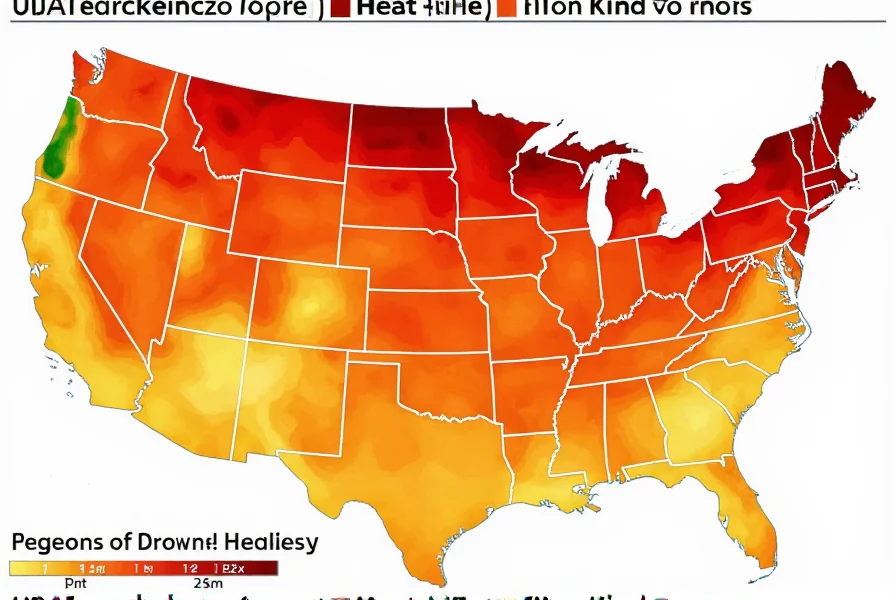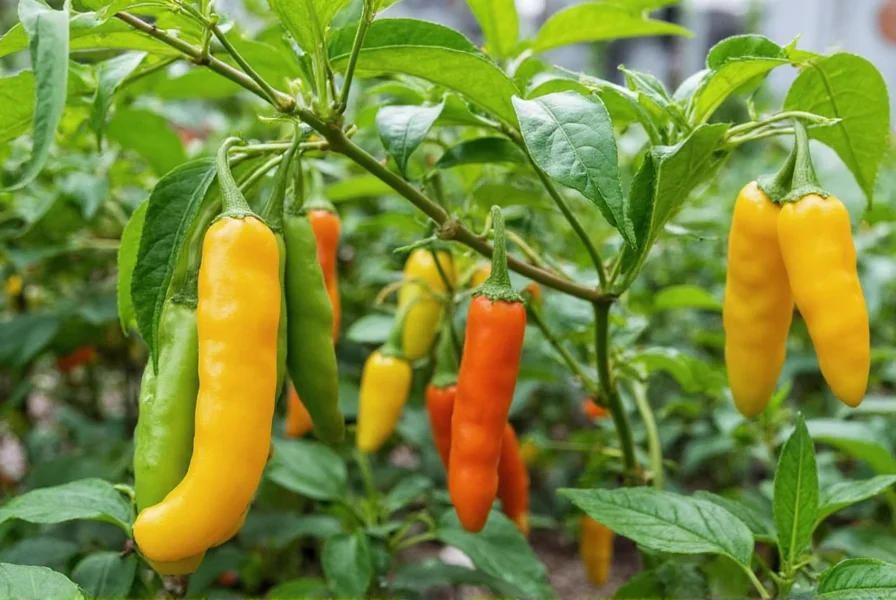Many gardeners confuse USDA hardiness zones with AHS Heat Zones when planning their pepper gardens. While USDA zones tell you whether a plant will survive your winter, AHS Heat Zones specifically address how well plants tolerate your summer heat. This distinction proves crucial for successfully growing peppers, which are particularly sensitive to excessive heat.
Understanding AHS Heat Zones for Pepper Cultivation
The American Horticultural Society developed the Heat Zone Map in 1997 to complement the USDA Hardiness Zone system. Where USDA zones divide North America into 13 regions based on average annual minimum winter temperatures, AHS Heat Zones divide the same area into 12 regions based on the average number of days per year when temperatures exceed 86°F (30°C)—the threshold at which many plants begin to suffer heat damage.
Peppers fall into a unique category among vegetables because they require substantial warmth to thrive but can suffer when temperatures become excessively high. Most pepper varieties perform best in AHS Heat Zones 3-8, where they receive sufficient warmth without experiencing prolonged extreme heat.

How AHS Heat Zones Impact Pepper Growth and Flavor
Temperature directly affects both the yield and flavor profile of peppers. In regions with moderate heat (AHS Zones 4-6), peppers typically develop optimal flavor compounds and capsaicin levels. When temperatures consistently exceed 90°F for multiple hours daily (AHS Zones 9+), several issues emerge:
| Heat Zone | Days Above 86°F | Pepper Performance | Recommended Varieties |
|---|---|---|---|
| 1-3 | 1-30 | Cool climate challenge | Early Jalapeño, Hungarian Wax |
| 4-6 | 31-90 | Optimal growing conditions | Cayenne, Serrano, Bell Peppers |
| 7-9 | 91-120 | Heat stress possible | Habanero, Thai Hot, African Bird's Eye |
| 10-12 | 120+ | Significant heat challenges | Chiltepin, Datil, Tabasco |
Pepper plants in higher heat zones often experience blossom drop, reduced fruit set, and sunscald on developing fruits. The intense heat can also alter flavor development, sometimes producing peppers with less complex flavor profiles despite higher capsaicin levels.
Selecting the Right Pepper Varieties for Your AHS Zone
Choosing appropriate pepper varieties for your specific AHS Heat Zone dramatically improves gardening success. Consider these recommendations based on extensive horticultural research:
Cooler Climate Options (AHS Zones 1-6)
Gardeners in cooler regions should prioritize early-maturing varieties that can set fruit before summer heat peaks. Look for varieties with "early" in their name or those bred specifically for northern climates. These peppers from ahs cooler zones often require black plastic mulch to warm the soil and may benefit from protective row covers during early growth.
Moderate Climate Options (AHS Zones 4-8)
This represents the sweet spot for most common pepper varieties. Gardeners here can successfully grow nearly any pepper type with proper care. When selecting peppers for moderate heat zones, focus on disease resistance rather than heat tolerance. Many heirloom varieties thrive in these conditions, developing complex flavors that balance heat and sweetness.

Hot Climate Options (AHS Zones 7-12)
Gardeners in high heat zones need to select varieties specifically adapted to intense summer temperatures. Traditional bell peppers often struggle, while native varieties from tropical and subtropical regions excel. Consider providing afternoon shade for sensitive varieties and implementing consistent moisture management to prevent heat stress.
Practical Growing Tips for Peppers Across Heat Zones
Regardless of your specific AHS Heat Zone, these cultivation strategies improve pepper success:
- Soil preparation: Peppers require well-draining soil rich in organic matter. Amend planting beds with compost before transplanting.
- Water management: Consistent moisture prevents blossom end rot. Drip irrigation works best to maintain even soil moisture.
- Mulching: Organic mulch conserves moisture and regulates soil temperature—critical in both cool and hot climates.
- Timing: Transplant peppers after soil temperatures reach at least 65°F (18°C) at a two-inch depth.
- Fertilization: Use balanced fertilizer with higher phosphorus content to encourage flowering and fruit set.
Common Misconceptions About Peppers and Heat Zones
Several myths persist about growing peppers in different climates. Many gardeners believe hotter weather automatically produces hotter peppers, but research shows capsaicin production relates more to plant stress than ambient temperature alone. Similarly, the assumption that all hot peppers require intense heat ignores the diversity of pepper varieties adapted to various climate conditions.
Understanding your specific AHS Heat Zone helps separate gardening fact from fiction when selecting and growing peppers. This knowledge proves especially valuable when researching pepper varieties from ahs gardening resources or planning your garden layout for optimal heat management.










 浙公网安备
33010002000092号
浙公网安备
33010002000092号 浙B2-20120091-4
浙B2-20120091-4